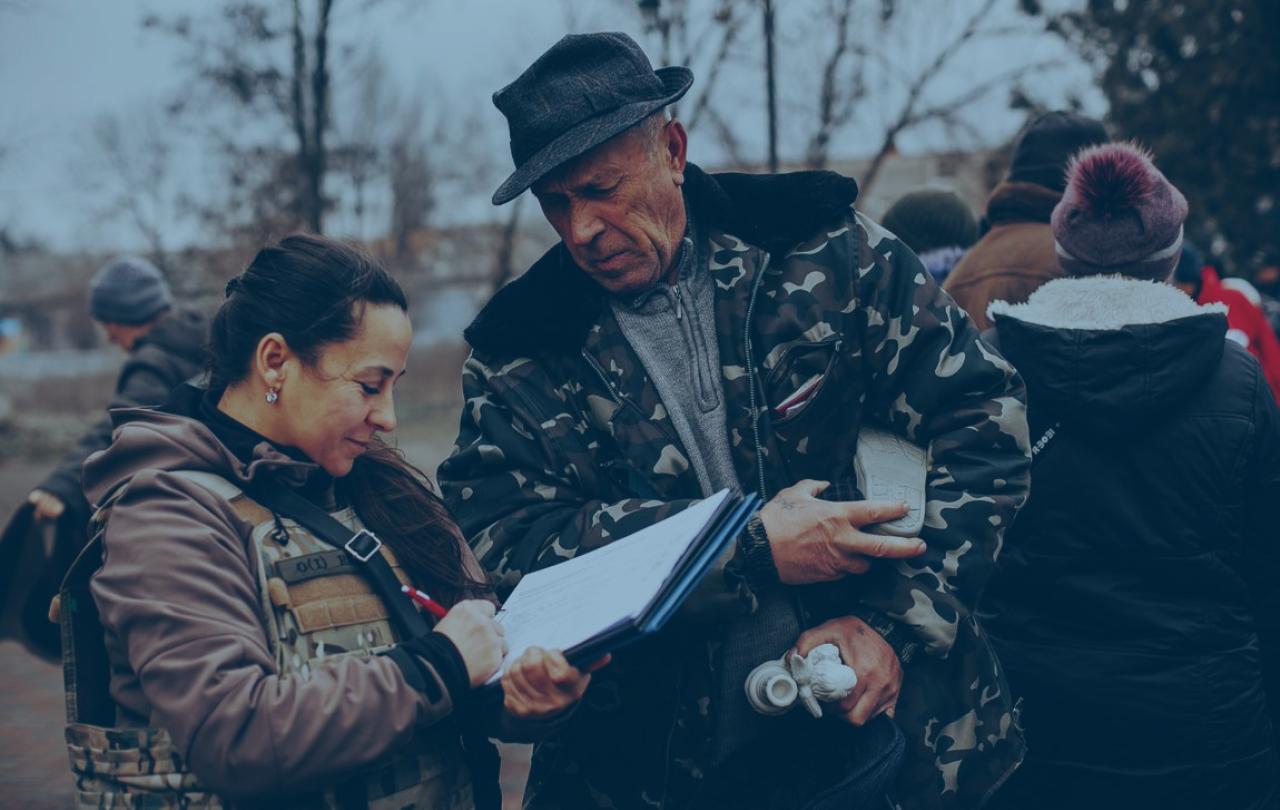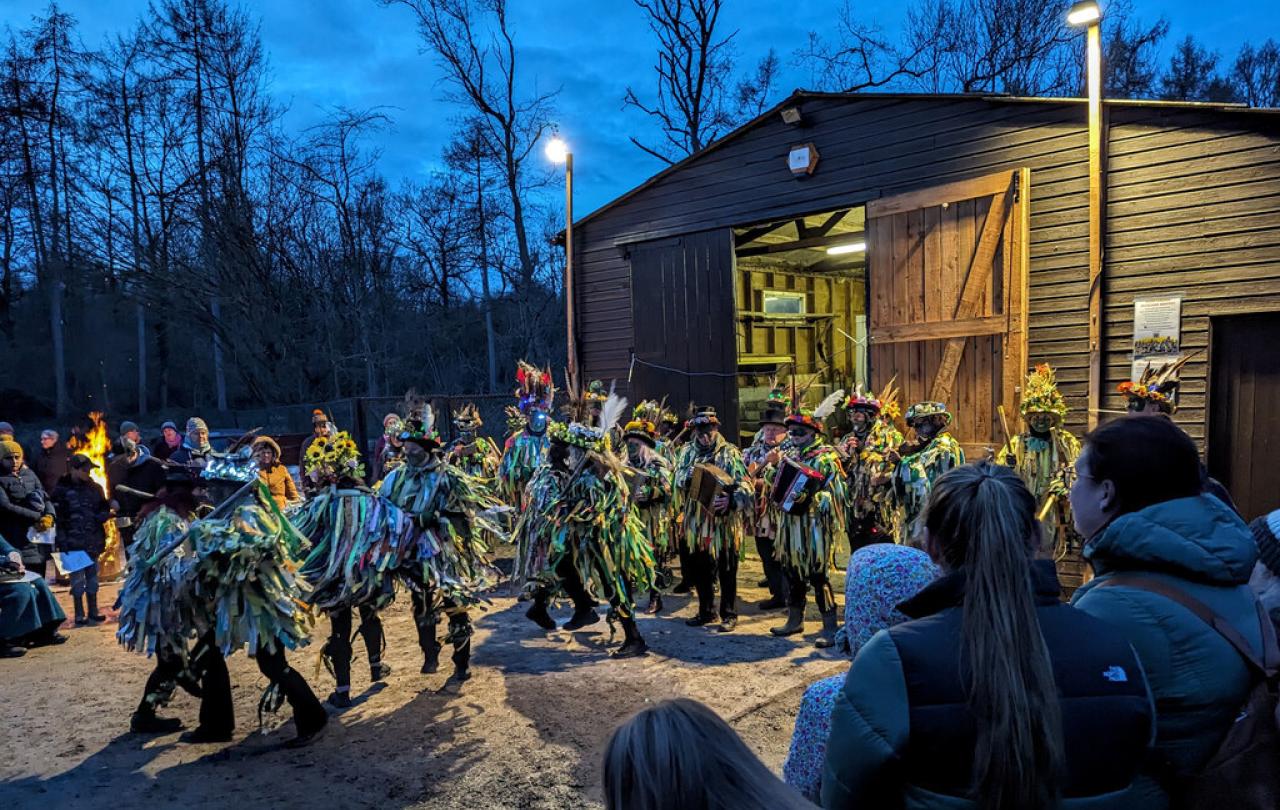Once, I went to a ‘wassail’ on the edge of the city I lived in. A Wassail, from the Old English phrase meaning "be in good health", is a ceremony that involves toasting apple trees and scaring away evil spirits to ensure a good harvest, and it dates back to Anglo Saxon times. A man dressed in green and brown layers and leaves led the ceremony, passing around cups and cider for us to offer to the trees. We listened to stories, shared food. The event was ticketed. I was curious. But I felt out of place; a fraud stepping into this old ritual with no prior connection to these particular apple trees or this bit of land they were on, or to the people who surrounded them – trying to convince myself and others that I belonged. To what? To who? At the end, we all went back to our separate homes across the city, no more responsibility for those trees, nothing to link us to each other anymore.
I’ve been advertised many events like this. Places to be celebrated through feasting, music and dance, entering into “ancient traditions connecting us to nature” – beating the bounds, toasting the land, enjoying seasonal feasts, listening to old stories. Photos advertising these events are like something styled for Country Living magazine, placing heritage rituals in high-end consumer settings; signalling intentionally or not that they are curated lifestyle experiences available to those who can afford them. They are part of the growing ‘return to the land’ movement that I often come across online, mediated through brands and influencers, curated retreats, Instagrammable countryside.
I look outside the window towards our rural Devon village. It is grey and drizzly, and it will probably be grey and drizzly at harvest time. There will be no Instagrammable moments, but there will be deep roots that have grown slowly and are tended all year round.
Perhaps these events signify an ache for a particular kind of rootedness. I have this ache. I am envious of friends who farm in landscapes their ancestors have inhabited for hundreds of years, of people who feel a clear sense of home and belonging. In the past, these feelings were often linked to community and to the faith and work traditions that bind community together: harvest home, Lammas, Rogation, saints’ days, midsummer. They weren’t boutique experiences open to anyone who could pay for them; they were communal and local, woven into survival, farming, faith, community. I am trying to carve out these feelings too.
I have been wondering what we lose when old celebrations and rituals are curated, commodified, or disconnected from the deeper soil of faith and tradition that once sustained them. How do we celebrate the longing for rootedness without flattening it into a lifestyle accessory, stripping it of faith, memory, obligation, and mystery? How might old rituals help us to feel deeply hopeful and rooted in an environmentally and socially fragmented age?
I think it can help to place these rituals in the context of place; of community; of faith. These contexts offer reasons to stay linked together even when the world is trying to pull us apart, even when I’d rather walk away. Without some kind of infrastructure of belonging, I think old rituals can become about consumption and lifestyle rather than connection to people and place. They become weekend events, or expressions of self, or a nice vibe – not a life’s ordering. Real ritual, I am coming to realise, requires weight; a tie to story, belief, and responsibility — not just aesthetic revival. A harvest festival in a rural, overlooked parish like mine may be small, strange and inefficient. It will not be photogenic, but it will connect me and others to a stream of 2,000 years of worship here, and before that to millennia of agricultural rhythm-marking. It introduces me to people and farms, to old stories that have lain dormant like relics in the soil, to possibilities for my own faith and belonging.
I have been reading Paul Kingsnorth’s new book, Against the Machine. By ‘machine’ he means the nexus of power, wealth, ideology and technology that has emerged; a project of modernity “that is to replace nature with technology, and to rebuild the world in purely human shape, the better to fulfil the most ancient human dream: to become gods.” I suspect Kingsnorth would see the commercialisation of ancient rituals as a consequence of machine culture. Disconnecting the rituals from their origins and landscapes and relational ecosystems is to render them floating experiences, available to be purchased and claimed and bent to anyone’s will. A machine-friendly spirituality that strips mystery and, importantly, the cost of that spirituality – commitment, belonging, sacrifice, inconvenience.
Kingsnorth shows that the razing of old stories, communities, and traditions created a blank canvas that allowed for the success of the industrial revolution, and so today’s materialistic and economically-driven culture. And so I see hope in the interest and resurgence of old traditions, in our hunger for roots, in the reclaiming of stories that were once trampled and forgotten. But I think it matters whether they are resurrected as machine-friendly buyable experiences, or as ways of being that seek continuity with something older and truer, something outside of today’s dominant paradigms.
Anthropologist Victor Turner explored the ideas of liminality and communitas. Liminality refers to an ambiguous ‘between’ state where individuals are stripped of their usual social roles and statuses. Communitas is the unstructured social bond that emerges among people in this liminal state, creating a sense of equality, directness, and shared humanity that challenges formal social structures. Perhaps – in this time of climate change and AI and an increasingly unknowable future – we are all in a liminal space. Perhaps the revival of old rituals allows for direct human connection. Perhaps the wassail event, and others like it, encourages human connection in a fractured time. Perhaps they make the countryside into a sanctuary in unknowable times, and perhaps that is enough.
The Christian story does these things too, but I think it goes deeper still – it sanctifies time itself, embedding the rituals and seasons in liturgy, creating a steady rhythm that can hold community together without being dependent on trends or tickets. It is a story grown from a sacred supper, shared feasts, prayer, fasting, seeds, and rituals of death and new life. It is a story that binds together its hearers into relation and rhythm-making.
Christianity is not a neat ‘answer’ to the rootlessness and unbelonging of our time. But it offers old and tested examples of depth, continuity, and gratitude in ritual. It has of course long absorbed and re-shaped older rituals, born of older communities – like the Celts, who knew that place and time and land and people, animated by something beyond, could combine to create particular patterns and poetry which, when taken seriously, could deepen identity and togetherness with each other and the Earth. Christianity recognised this and built on it (and squashed it in places, but that is another story). I think that picking and choosing and bending old traditions, detaching them from time and place and cultural significance, even if just to remove religious baggage, reduces that old poetry to prose. It is no longer sustained by its original social and spiritual infrastructure.
Such an infrastructure, built over generations, connects us to a through-line of celebration, gratitude, lament, and renewal. Following this through line – which whether I’ve liked it or not has linked me to new and old expressions of the Christian faith – is what is helping me to find belonging and participation. The wassail I joined signified to me that I’m still on the search for belonging. I want to go to a Wassail event again, but I want to do it outside of the ‘machine’, in a place I am putting roots into, with trees that I help tend, lifting bread around a harvest table with others I am working to know. I still feel a tug to these old rituals, as if assessing their ability to provide orienting infrastructure to my life and to the life of community. But in this age of disconnection – of industrial food, global supply chains, loneliness – what I want is less curated experience and more real belonging. I hope to find a bit more of that at harvest time.






